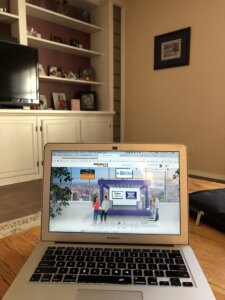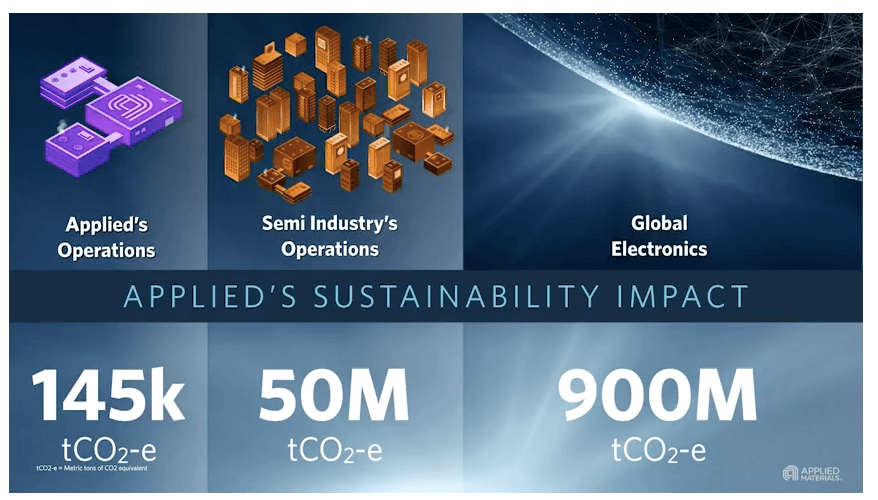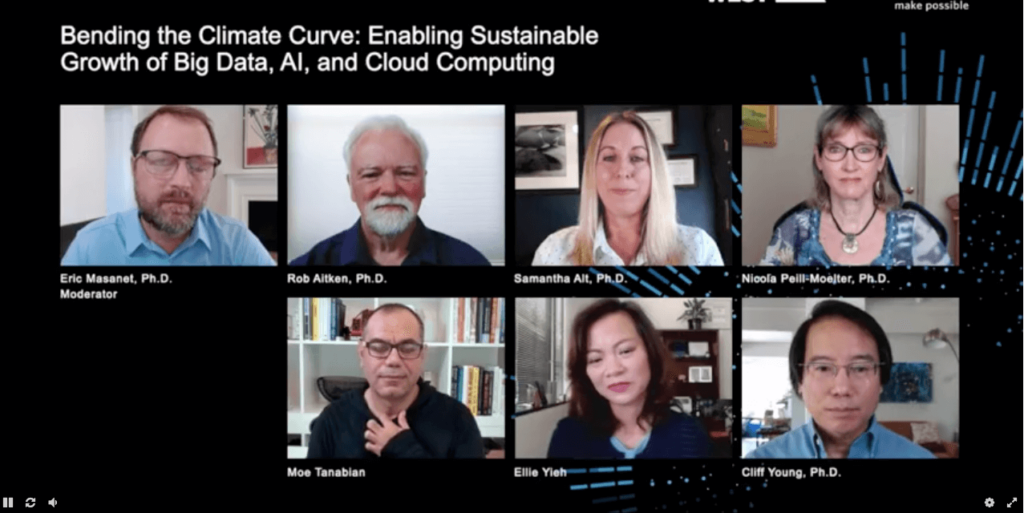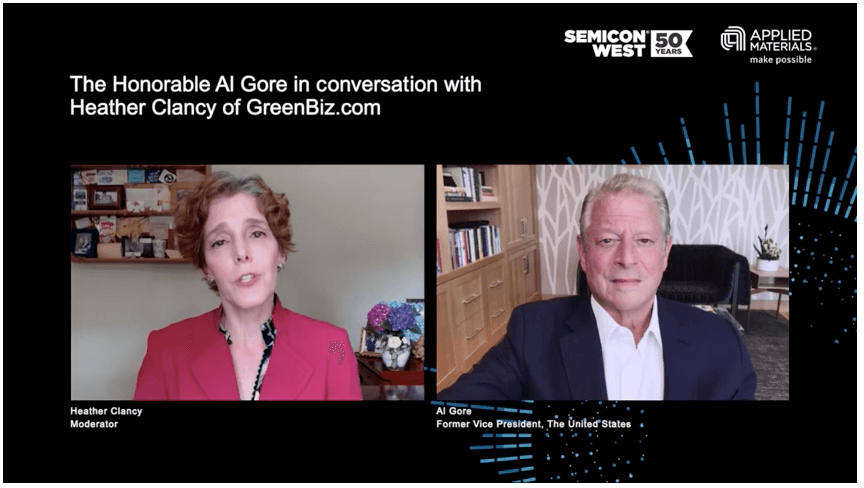I had a dream last night that the SEMI team was a little upset with me because we were getting more visitors to our booth to watch the Zooming into SEMICON West interviews than they were getting for the live keynotes. Wishful thinking, I know. But I thought I’d put it out there. (Seriously – go check them out. They’re a lot of fun.)
This morning, I took my own advice and set my status to “do not disturb” so I could focus on some of the live SEMICON West keynotes and panel discussions. As this virtual experience unfolds, I feel like there is a lot to unpack and share. What do I think of the format? What do I think of what was said? Why did I come up with this particular title? Let’s start with these and see how far we get.
SEMI Has a Sense of Humor
Let’s remember, this was supposed to be a celebration of epic proportions. After all, this is SEMI’s 50th anniversary. Live SEMICON West was in the works for a year. 2020 was going to be a big comeback year for the industry. The decision to abandon those plans, take this event virtual, and find a way to make it a celebration shows character. It was one of those laugh or cry moments, and SEMI chose to laugh. Check out Dave Anderson’s welcome address to find out what I mean (once the recorded version is available).
For their parts, Ajit Manocha and Bertrand Loy set an even more positive tone. Despite the fact that we are in the midst of a global pandemic, increased trade tensions, and other uncertainties, they reported that the semiconductor industry is following a growth trajectory for the second half of 2020 and that 2020 will see even more growth.
“This industry is vital to solving the uncertainties surrounding us,” said Manocha. “We haven’t felt the impact as much as other (industries), and we expect to see growth. Some of the old timers say they wish they were just starting out now, as we grapple multiple tsunamis to arrive even stronger.”
Loy applauded SEMI for “shifting priorities to help the industry effectively navigate these challenges” by aggregating best practices for resources and providing guidance for emerging trade issues. He said he’s feeling a spirit of solidarity, and that the transition to Virtual SEMICON West that had to be done in short order demonstrates the resourcefulness of the industry. “It’s nothing short of amazing,” he said. “I don’t believe there is a better way to celebrate 50 years than to reaffirm our purpose.”
Where am I Sitting Right Now?

Dave Anderson reminisced for a bit about the very first SEMICON West in 1970 that took place in the San Mateo fairgrounds. Meetings took place in rented RVs and exhibits were set up on the racetrack. Attendance was at 50% capacity the first year, but by 1974 was a sold-out show. He recalls the “general excitement about being involved in something that set out to change the world.” And now the world has changed in six months, and the same innovative spirit was put to work to create this virtual event. He asked us to take a moment and look at “where you’re sitting right now” comparing this experience with something right out of the Jetsons.
Where I am right now is at my laptop in my family room, where I’ve been working for the past six months. And it feels strange to be watching these events here rather than in the Yerba Buena auditorium at the Moscone, snapping photos with my smartphone and tweeting out bits and pieces. Instead, I’m grabbing screenshots and hopping back and forth between the virtual booth and sessions. I’m certainly not getting my steps in, and I’m bummed that I don’t have the annual Kiterocket party to look forward to tonight. (However, in keeping with the tradition of SEMICON West Day 1, I was slightly hungover when I logged in this morning… just saying.)
SEMICON West Keynotes: Conversation with Al Gore
As I mentioned in my preview post, Al Gore’s featured keynote discussion with Green.Biz’s Heather Clancy is one thing that didn’t change from a live to a virtual format. But I do wonder how differently his remarks would have been if been had the pandemic and Black Lives Matter (BLM) protests had not happened in the first half of 2020. I’m guessing the climate change and sustainable manufacturing conversation would have been the same, but I doubt they would have been linked to COVID and BLM. And thus, the inspiration for my title.
“The pandemic reminds us that when scientists are warning us in dire terms, it’s best not to ignore them. We were warned about this and we should have listened,” Gore said. “Climate scientists have been warning us for even longer about using the atmosphere like a sewer.” He added that BLM reminded us so powerfully of the problems with racism around the world and that it’s a good time to focus on warnings we should heed. (The connection between the pandemic, BLM, climate change, and the semiconductor industry was still not clear to me, but we’ll get there. I promise. Read on.)
He also said that while the pandemic crisis can be measured in months, the climate crisis is measured in centuries. He shared sobering numbers like:
- 19 of the last 20 hottest years occurred in the past 20 years
- We are still putting 150M tons of carbon emissions into the atmosphere every 24 hours
But he’s hopeful because he says we are in the midst of a sustainability revolution, powered by artificial intelligence (AI) and other technological advancements. Global investment in renewables last year was 3X that of fossil fuels. Electric vehicles are advancing, and the cost is coming down. 44 governments around the world are requiring the phase-out of internal combustion engines.
He also noted that the climate crisis offers the opportunity to create tens of millions of new jobs, citing solar installers and wind turbine technicians as the two fast-growing.” This can be the stimulus we need for sustainable prosperity in the wake of the pandemic.” he said.
Gore told Clancy that he didn’t want to discuss politics because he’s “a recovering politician and doesn’t want to relapse.” But he did share some of his realizations about COVID and the BLM movement:
- There is a direct correlation between the burning of fossil fuels and the mortality rate of COVID 19
- The reduction in travel and work-from-home situation that has caused us to shift to virtual interactions is showing us that it works well, and maybe we don’t have to fly so much
- There is a privilege associated with having “Zoomable” jobs and it is coming to the forefront
- It takes 11.5 black families to make up the average income of one white family
An awakening is taking place, he said, and the younger generation is demanding a better future, and they would be excited to know what this industry has planned to take us there. He talked about the advantages of diversity and inclusion, as well as a democratic approach to making collective decisions.
And as wonderful as semiconductor technology and the things it enables are, the reality is we have a massive carbon footprint, due to the amount of electricity required to build everything from chips, to the equipment needed to make them, as well as the power the data centers needed to support the applications that use them.
Lastly, Gore talked about environmental justice, and how climate change has an impact on communities of color. How can semiconductor industry help? He pointed out, and rightly so, that the tech industry has work to do to deal with the struggle to become more racially and culturally diverse. Software companies have been broadening hiring funnels. This could be increased in the semiconductor industry.
Gore implored us to work together to reduce our carbon footprint and decarbonize data center power, increase diversity and inclusion in our companies.
An Industry Rises to the Challenge
In doing so, he set a perfect stage for both Garry Dickerson’s keynote and the Executive panel discussion on enabling sustainable growth of AI, data centers, and cloud computing.
Dickerson outlined all the measures Applied Materials in committing to address all these issues, while still driving the technology roadmap.
He stressed the company’s commitment to a sustainable future and said it is irresponsible to double or triple environmental impact while double or tripling growth of the company. He stated the company’s commitment convert to 100% renewable energy by 2022 in its US operations, and 100 globally by 2030.

Dickerson also noted that the BLM movement was a wakeup call. “We are stronger when we stand together against discrimination,” he said. He talked about Applied’s plan for transparency and publishing representation data. “We are committed to bringing more women and under-represented minorities to all levels,” he said.
The executive panel was probably the most interesting session of the morning. Representatives from ARM, Google, Microsoft, and VMware shared ideas and approaches to reduce the carbon footprint of data centers, and how AI can help.

Rob Aitkin, ARM, said the company is looking at system-level solutions implementing 3D integration approaches to reduce power needs (YEAH!). He said moving data is inefficient, so we need to bring compute closer to memory and that means die stacking or moving AI to edge.
Cliff Young, of Google, suggested we return to Denard Scaling, in which performance improves while power reduces.
Intel’s Samantha Alt says the key is to make data centers as efficient and green as possible – carbon-free or at least carbon neutral. This requires improved collaboration between manufacturing hardware and software.
Applied’s Ellie Yieh had a two-fold answer: working to make tools more efficient, and working with customers to drive performance, power, and cost (PPAC) scaling, by pushing AI closer to device and materials and vice versa.
Moe Tanabien of Microsoft focused on the advantages of AI at the edge as an important part of the energy use solution.
Nicole Piell-Moelter of VMware talked about using AI, machine learning and edge computing to integrate more renewable energy into the grid and regulate
Moderator Eric Masanet of UC Santa Barbara wrapped it up nicely, saying it’s complicated, and there’s no end in sight as the world becomes interconnected. We could see a rise in energy use if we don’t get a handle on it. On the other hand, we can also leverage semiconductor technology to bend the climate curve. But it requires a large scale commitment to address climate change. Honestly, there was a lot more to the discussion, so if you are able, I recommend putting it on your SEMICON West watch list.
Let’s Not Do That
I wouldn’t be me if I didn’t also voice my opinion on the downside of what I saw today, and that was leveraging COVID 19 as an advantage. Gary Dickerson seemed a little too excited about the opportunities afforded this industry by the pandemic. He said the world is relying on semiconductors more now than ever before, with work- and school-from-home situations. (Even if it’s true, let’s tone it down a bit.) “I’m excited about the trends,” he said. “AI and the data economy will change everything.”
Futurist Steve Brown was another one that was a little too eager about COVID 19, calling it both “a great accelerator and great defroster, forcing us to embrace digital change.” According to Brown, the pandemic presents operational challenges for business and we can help. He actually advised us to take advantage of it, because there is a “ton of investment driving technology innovation in aspects of a business.”
He noted how digital communication, such as telehealth shot through the roof since the pandemic. Yeah, Steve, because we don’t want to DIE. Most of us would still prefer to see our doctor in person.
And let’s not forget that the digital world is only available to those who can afford to participate. Nobody mentioned all the school children living in under-served communities who can’t access online school because they can’t afford a computer. Futurists always forget that technology often drives a bigger wedge between the haves and the have nots.
As always – lots of food for thought and discussion from SEMICON West keynote sessions. And with this digital platform, you’ve got 60 days to check out the recorded versions. Let’s see what tomorrow holds. And if you’re wandering around, stop in to say hi! – FvT
PS: I was right about getting to see Gore’s home office. But I thought the bookshelves would be bigger.























